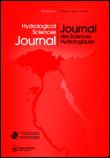Yu et al., 2015
Modelling long-term water yield effects of forest management in a Norway spruce forest
Yu, Xuan, Anna Lamačová, Christopher Duffy, Pavel Krám, Jakub Hruška, Tim White & Gopal Bhatt (2015)
Hydrological Sciences Journal, 60:2, 174-191
-
Shale Hills, GRAD STUDENT
-
Shale Hills, INVESTIGATOR
-
National, Shale Hills, INVESTIGATOR, STAFF
-
Shale Hills, COLLABORATOR, GRAD STUDENT
Abstract
Intensive forest management is one of the main land cover changes over the last century in Central Europe, resulting in forest monoculture. It has been proposed that these monoculture stands impact hydrological processes, water yield, water quality and ecosystem services. At the Lysina Critical Zone Observatory, a forest catchment in the western Czech Republic, a distributed physics-based hydrologic model, Penn State Integrated Hydrologic Model (PIHM), was used to simulate long-term hydrological change under different forest management practices, and to evaluate the comparative scenarios of the hydrological consequences of changing land cover. Stand-age-adjusted LAI (leaf area index) curves were generated from an empirical relationship to represent changes in seasonal tree growth. By consideration of age-adjusted LAI, the spatially-distributed model was able to successfully simulate the integrated hydrological response from snowmelt, recharge, evapotranspiration, groundwater levels, soil moisture and streamflow, as well as spatial patterns of each state and flux. Simulation scenarios of forest management (historical management, unmanaged, clear cutting to cropland) were compared. One of the critical findings of the study indicates that selective (patch) forest cutting results in a modest increase in runoff (water yield) as compared to the simulated unmanaged (no cutting) scenario over a 29-year period at Lysina, suggesting the model is sensitive to selective cutting practices. A simulation scenario of cropland or complete forest cutting leads to extreme increases in annual water yield and peak flow. The model sensitivity to forest management practices examined here suggests the utility of models and scenario development to future management strategies for assessing sustainable water resources and ecosystem services.
Citation
Yu, Xuan, Anna Lamačová, Christopher Duffy, Pavel Krám, Jakub Hruška, Tim White & Gopal Bhatt (2015): Modelling long-term water yield effects of forest management in a Norway spruce forest. Hydrological Sciences Journal, 60:2, 174-191. DOI: 10.1080/02626667.2014.897406
Explore Further





